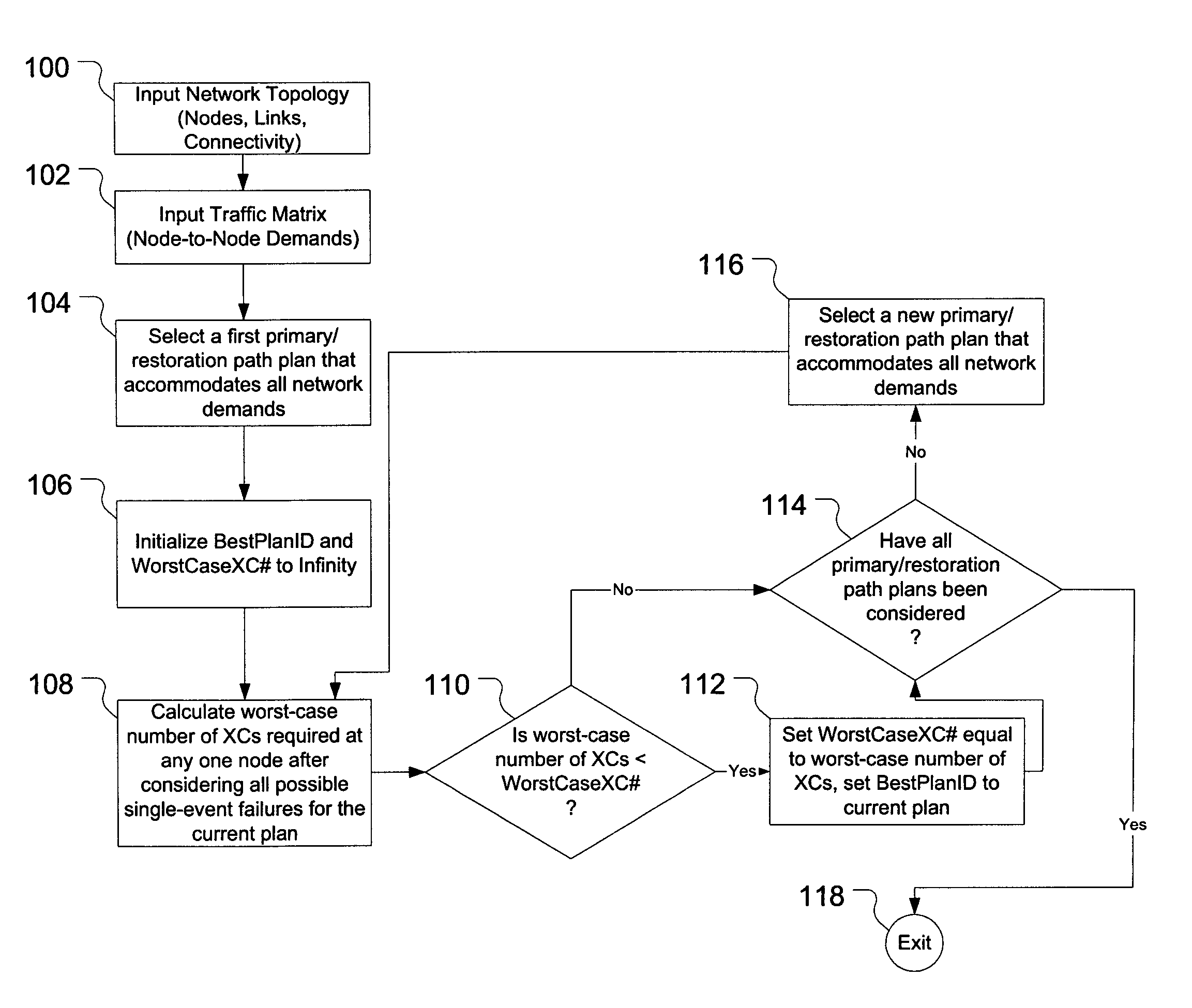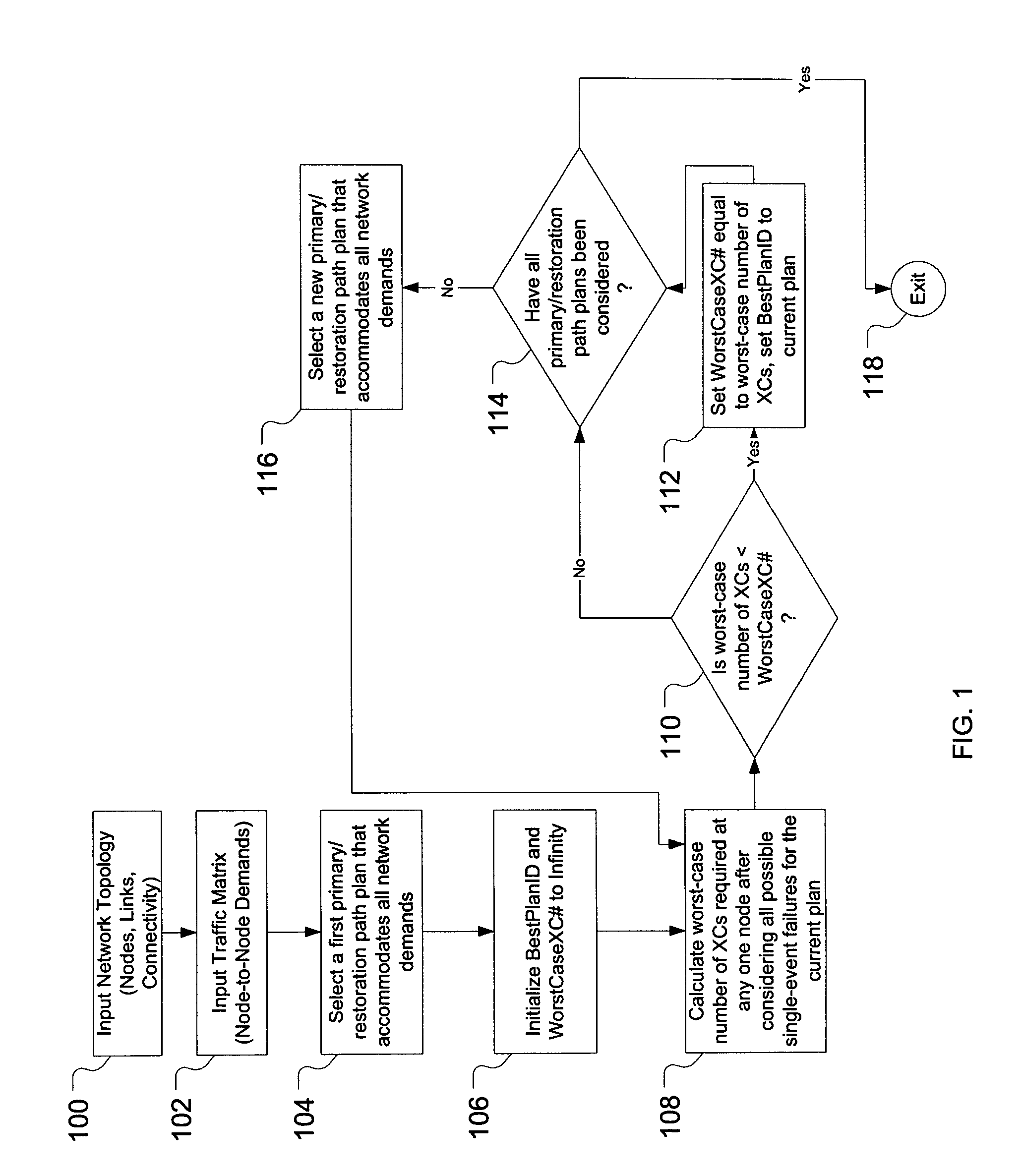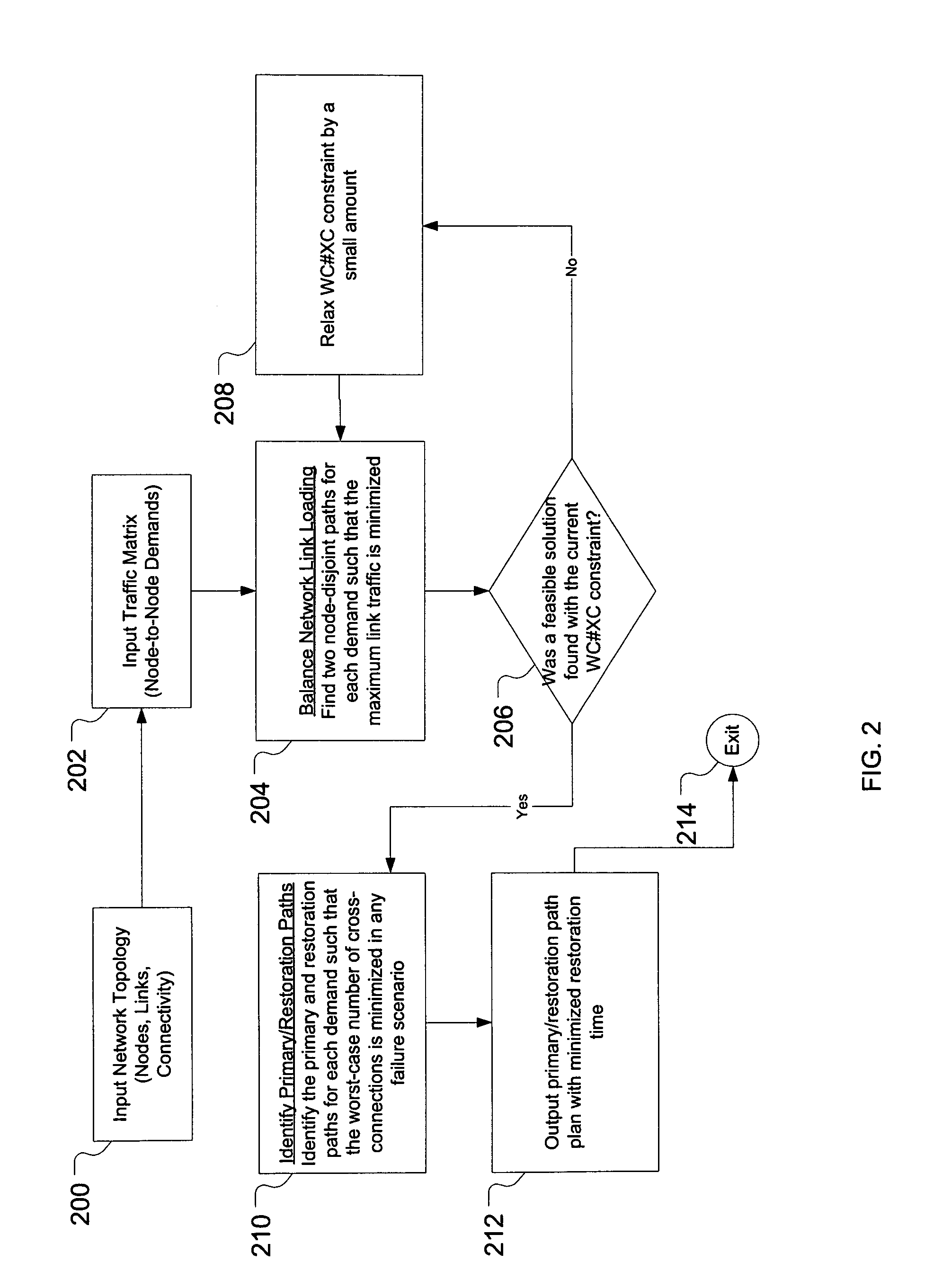Restoration time in mesh networks
a mesh network and recovery time technology, applied in the field of communication networks, can solve the problems of restricting traffic re-engineering options, less cost-effective routing of grouped demands, etc., and achieve the effect of reducing the worst-case number of cross-connections and reducing the overall restoration tim
- Summary
- Abstract
- Description
- Claims
- Application Information
AI Technical Summary
Benefits of technology
Problems solved by technology
Method used
Image
Examples
Embodiment Construction
[0018]Reference herein to “one embodiment” or “an embodiment” means that a particular feature, structure, or characteristic described in connection with the embodiment can be included in at least one embodiment of the invention. The appearances of the phrase “in one embodiment” in various places in the specification are not necessarily all referring to the same embodiment, nor are separate or alternative embodiments mutually exclusive of other embodiments.
[0019]Introduction
[0020]Significant research has been done into various restoration and protection strategies for mesh networks at both the service and optical layers. Proposed architectures include centralized vs. distributed, pre-computed vs. computed on demand in real-time, and link-based vs. path-based. Characteristics that distinguish between these various restoration and protection strategies include recovery time, failure coverage, and required recovery capacity. A survey of relevant research as well as a specific distribute...
PUM
 Login to View More
Login to View More Abstract
Description
Claims
Application Information
 Login to View More
Login to View More - Generate Ideas
- Intellectual Property
- Life Sciences
- Materials
- Tech Scout
- Unparalleled Data Quality
- Higher Quality Content
- 60% Fewer Hallucinations
Browse by: Latest US Patents, China's latest patents, Technical Efficacy Thesaurus, Application Domain, Technology Topic, Popular Technical Reports.
© 2025 PatSnap. All rights reserved.Legal|Privacy policy|Modern Slavery Act Transparency Statement|Sitemap|About US| Contact US: help@patsnap.com



